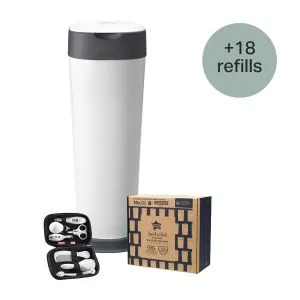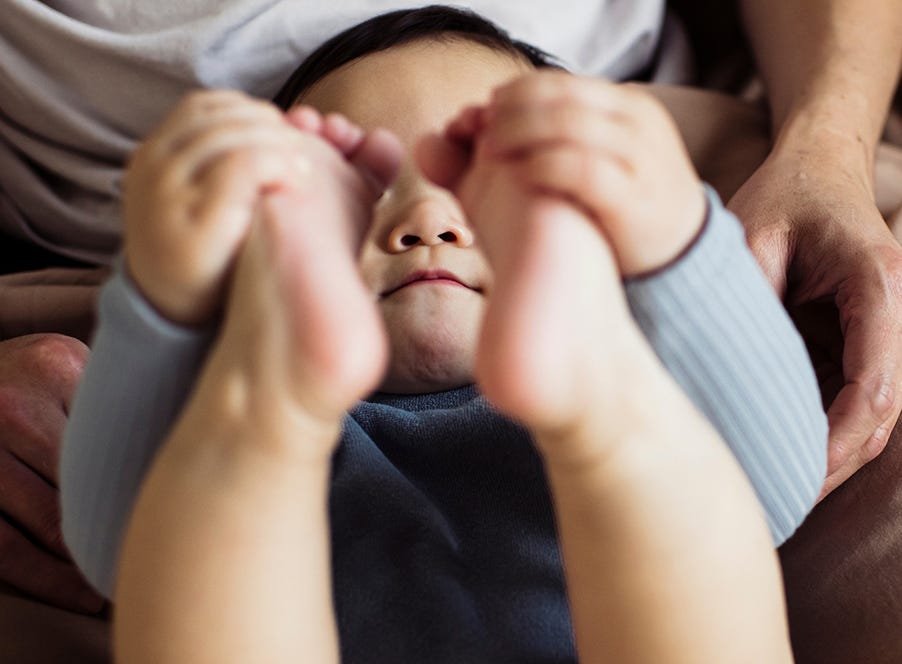
Ultimate XL Nappy Disposal Bundle with 18 Refills
Bundle & Save 40%
Subscription orders can be cancelled at anytime. Free delivery on all subsequent subscription orders. Find out more about subscriptions.
They’re easy and fuss free
Your products are automatically sent to you
You save up to 10% when you sign up for a subscription
You can cancel at any time

Teething is a rite of passage that every baby experiences. It’s a process that involves the movement of milk teeth – also known as baby teeth, primary teeth, or deciduous teeth – up, and then through the gums.
Unfortunately, although it’s completely natural and normal, it can be painful for babies and, in turn, stressful for their parents and caregivers.
To help you understand more about the teething timeline, we've created this guide to help you understand when teething starts, which of your baby’s teeth will appear first, how many teeth they’ll have, and when they’ll eventually get their adult teeth.
All babies start teething at slightly different times and did you know that although it’s rare, some babies can even be born with teeth!
For some, teething symptoms arrive and their first teeth come in as early as three months, while others don’t start teething until after their first birthday.
But usually, babies will start showing symptoms of teething when they’re around six months old, with their two bottom, front teeth appearing first.
By the time they've stopped teething, children have 20 milk teeth in total. That's 10 on the top and 10 on the bottom.
Most little ones will have all 20 of their milk teeth by the time they're around three years old.
A child’s 20 milk teeth will usually begin to fall out around the age of six or seven to make way for their permanent adult teeth – of which there will be 32! When this happens, they may have some discomfort, but rest assured that you'll have a few years in between each stage with less dental disruption!
Explore the Range
Here’s a rough guide to how a baby’s teeth emerge and how long teething usually lasts at each stage:
You should start brushing your baby’s teeth (using the correct size toothbrush and a very small amount of fluoride toothpaste) morning and night as soon as they appear through their gums.